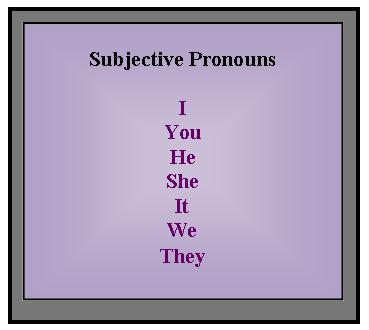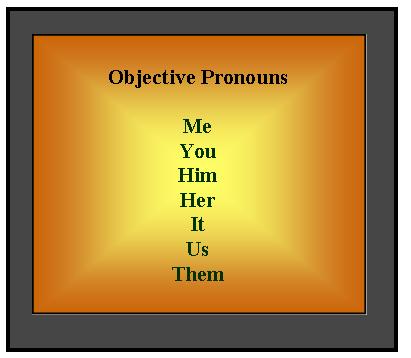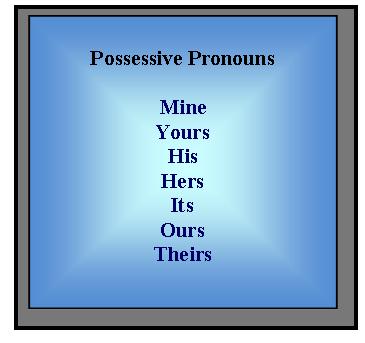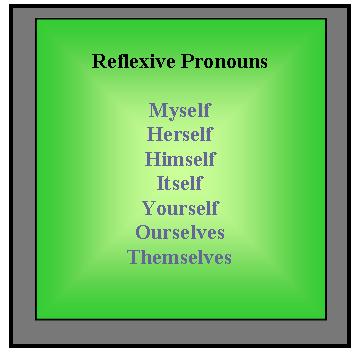How to Properly Use Generic Pronouns

By Joan Whetzel
Pronouns replace nouns in a sentence and are used when it would sound repetitive to keep using the noun. Like the nouns that they replace, pronouns may be the subject or object of the sentence, or they may be possessive. The pronoun also has to agree with the noun that it’s replacing in order for your writing to make sense.
Subject Pronouns
Subject pronouns are the subject of the sentence. To use a subject pronoun correctly, begin first by writing the sentence with the noun (person, place, or thing). Then rewrite the sentence using the pronoun – I, you, he, she, it, we, or they – in place of the noun.
Example:
- John and Sally walked to school this morning.
They walked to school this morning.
Subject pronouns are also used when a noun is repeated in the sentence.
Example:
- Kelly played with the dog, then came home and gave the dog a bath.
Kelly played with the dog, then came home and gave it a bath.

Object Pronouns
Object pronouns are used like object nouns. They are the object of the action, not the subject of the sentence. Object pronouns include: me, you, him, her, it, us, and them.
Example:
· Janet spoke with the doctor over the phone.
Janet spoke with her over the phone.
· To whom are you talking?
Are you talking to him?

Possessive Pronouns
Possessive pronouns take the place of possessive nouns, but the basic grammar is a bit different. With possessive nouns, an apostrophe and an “s” are added to the end of the word. That doesn’t work with pronouns. The possessive pronouns are: mine, yours, his, hers, its, ours, and theirs.
Example:
· John’s backpack is made from green camouflage denim.
His backpack is made from green camouflage denim.
It’s important to note that the possessive pronoun of “it” is not it’s, but its. This is the one exception to the apostrophe rule when it comes to the possessive form of grammar. In the case of “it”, it’s stands for the contraction “it is.”
Example:
· It’s (it is) going to hit 95 degrees this afternoon.
· The dog’s owner is its best friend.

Example:
- We gave ourselves a reward.
- She showed herself to the door.
- I wrote myself a note to remind myself of the upcoming date.
- You drove yourself to the emergency room.
There is always the temptation to use reflexive pronouns incorrectly. Reading these examples makes it clear because they sound all wrong when read aloud.
- Incorrect: My mother and myself went shopping for dad’s birthday present.
- Correct: My mother and I went shopping for dad’s birthday present.
- Incorrect: My mother and myself did it.
- Correct: My mother and I did it.
One way to be sure if the usage is correct or incorrect in the above case is to remove the words “my mother and”, and just read the rest of the sentence. You wouldn’t say “myself went shopping for dad’s birthday present”, it doesn’t sound right.
Agreement
With pronouns, like verbs, there must be agreement, but pronoun agreement is a little different than verb agreement. Pronouns must agree in number, person, gender, and with reference to a specific noun. Number agreement means using a singular pronoun to replace a singular noun (I, me, him, her) or replacing a plural noun with a plural pronoun (they, them, us). Person agreement means choosing between first, second, and third person, and sticking with it for the entire writing exercise. Gender agreement deals with whether the subject or object is female, male, or neutral. If the original noun was a female, use a feminine pronoun. The same goes with masculine pronouns and neutral (it, its) pronouns.
When using pronouns, it’s important to make sure that they always refer to a specific person place or thing and they aren’t vague.
Example:
- She accidentally bumped the car into the garage door, but it wasn’t damaged.
What wasn’t damaged here – the car or the garage door.
- They say time heals all wounds.
Who does “they” refer to in this sentence? “They” could be anybody.
- My mother talked to her sister and told her she could bake a cake for the party.
Which “she” could bake the cake? My mother or her sister?
Using pronouns can be a bit tricky. Sometimes it helps to read the sentence out loud in order to detect an error. Other times, simply replacing the pronoun with the noun it refers to will show you whether you chose your pronoun correctly. Don’t be afraid of using pronouns; they are essential to good writing. They help vary the sentences and eliminates some of the repetition that would come from reusing the same noun.
Resources
Strauss, Jane. Grammar Book. Pronouns.
http://www.grammarbook.com/grammar/pronoun.asp
Purdue Online Writing Lab. Using Pronouns Clearly.
http://owl.english.purdue.edu/owl/resource/595/01/
Wiki How. How to Use Pronouns Correctly.
http://www.wikihow.com/Use-Pronouns-Correctly
Ryerson University. Proper Pronoun Use.
http://www.ryerson.ca/content/dam/studentservices/els/pdf/Proper%20Pronoun%20Usage.pdf
Capitol Community College. Pronouns.






